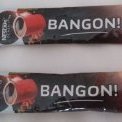Richness Of The Thai Language
-
Recently Browsing 0 members
- No registered users viewing this page.
-
Topics
-
-
Popular Contributors
-
-
Latest posts...
-
45
SPOILER - JD Vance will win in 2028 and 2032
You mean like choking on a hamburger? -
49
Ukraine North Korea to Send Tens of Thousands More Troops to Aid Russia in Ukraine
You are of course right, but you're wasting your time. Some wont acknowledge the truth if it hit them straight in the face. I have never seen any clearer Russian propaganda in my life. Russia is notoriously known for not allowing free speech, and they are arresting citizen for almost less than nothing. Saying otherwise is just a joke. He can't be real, so yes, you will get a reply in that area. -
45
SPOILER - JD Vance will win in 2028 and 2032
Listening to Trump speak is so monotonous; like a broken record. -
2
-
-
7
Trump says without subsidies Musk would have to ‘head back home to South Africa’
They are accorded refugee status, with limited recourse to public funds and work. If or once the conditions in South Africa change, the program will be canceled, and those with refugee status will have that canceled and be asked to settle their affairs, and return home.
-
-
Popular in The Pub







.thumb.jpeg.d2d19a66404642fd9ff62d6262fd153e.jpeg)



Recommended Posts
Create an account or sign in to comment
You need to be a member in order to leave a comment
Create an account
Sign up for a new account in our community. It's easy!
Register a new accountSign in
Already have an account? Sign in here.
Sign In Now